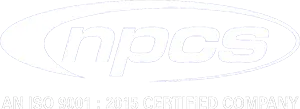Information
Recycling of Waste Plastics: Starting a Business, How to Start a Plastic Recycling Manufacturing Business, Plastic Reprocessing Unit, Indian Plastic Recycling Industry, Manufacturing Plant, Detailed Project Report, Profile, Business Plan, Industry Trends
Recycling of Waste Plastics: Starting a Business, How to Start a Plastic Recycling Manufacturing Business, Plastic Reprocessing Unit, Indian Plastic Recycling Industry, Manufacturing Plant, Detailed Project Report, Profile, Business Plan, Industry Trends, Market Research, Survey, Manufacturing Process, Machinery, Raw Materials, Feasibility Study, Investment Opportunities, Cost and Revenue, Plant Economics, Production Schedule, Working Capital Requirement, Plant Layout, Process Flow Sheet, Cost of Project, Projected Balance Sheets, Profitability Ratios, Break Even Analysis
The plastics industry has developed considerably since the invention of various routes for the production of polymers from petrochemical sources. Plastics have substantial benefits in terms of their low weight, durability and lower cost relative to many other material types. A major portion of plastic produced each year is used to make disposable items of packaging or other short-lived products that are discarded within a year of manufacture. These two observations alone indicate that our current use of plastics is not sustainable. Recycling is one of the most important actions currently available to reduce these impacts and represents one of the most dynamic areas in the plastics industry today. Recycling provides opportunities to reduce oil usage, carbon dioxide emissions and the quantities of waste requiring disposal.
Plastic recycling refers to the process of recovering waste or scrap plastic and reprocessing it into useful product. Due to the fact that plastic is non-biodegradable, it is essential that it is recycled as part of the global efforts to reducing plastic and other solid waste in the environment.
Markets and uses for recycled plastics are rapidly expanding. Plastic containers are being collected at the curb for recycling in nearly 500 communities, representing more than 4 million households. Demand for recycled plastic will continue to expand and new markets will develop as technologies permit the efficient segregation and reprocessing of high-purity resins. Improved quality of resins, environmental issues and higher prices for virgin resin will contribute to growth.
Waste is now a global problem, and one that must be addressed in order to solve the world's resource and energy challenges. Plastics are made from limited resources such as petroleum, and huge advances are being made in the development of technologies to recycle plastic waste among other resources. Mechanical recycling methods to make plastic products and feedstock recycling methods that use plastic as a raw material in the chemical industry have been widely adopted, and awareness has also grown recently of the importance of Thermal recycling as a means of using plastics as an energy source to conserve petroleum resources.
Plastics have their impact on the environment through all stages of their existence from manufacture, to utilization and disposal. Manufacturing requires significant quantities of fossil fuels, a non-renewable resource. Burning of plastic releases smoke which contaminates the environment. The smoke contains small particulates, hazardous substances and green house gases.
The disposal of plastics products also contributes significantly to their environmental impact. Most plastics are not biodegradable and can persist in the environment for many years. Plastics can cause blockage of drainage and sewage systems resulting in water logging, flooding and spread of water born diseases. With more and more plastics products, particularly packaging, being disposed of soon after their purchase, the landfill space required by plastics waste is a growing concern.Thus, due to demand it is a good project for entrepreneurs to invest.
Few Indian Major Players are as under
· Aadi Industries Ltd.
· Electro Polychem Ltd.
· K S M Exports Ltd.
· Khaitan Mercantile Ltd.
· Petro Plast Industries Ltd.
· Promising Exports Ltd.
· Rishi Techtex Ltd.
· Shree Datta Inds. (India) Ltd.
· Shyam Textiles Ltd.
· Suprapti Plastics Ltd.
· Tarajyot Polymers Ltd.
· U I C Udyog Ltd.
· V H C L Industries Ltd.
Table of Contents
]
1. Project Location
1.1. District Profile & Geotechnical Site Characterization
1.1.1. General
1.1.2. Location & Geographical Area
1.1.3. Topography
1.1.4. Map
1.1.5. Industrial Scenerio
1.1.6. Transportation and Communications
1.1.7. Economy & Industry
2. Introduction
2.1. Environmental Concerns of Plastics
3. Benefits of Recycling Plastics
4. Types of Plastics
5. Characteristics of Plastics
6. Uses and Applications
6.1. Applications of ABS
6.2. Applications of Polypropylene (PP)
7. Properties
7.1. ABS (Acrylonitrile Butadiene Styrene)
7.2. Standard Acrylics
7.3. Modified Acrylics
7.4. Polypropylene (PP)
8. B.I.S. Specifications
8.1. IS 14534 (1998): Guidelines for recycling of plastics [PCD 12: Plastics]
9. Market Survey
10. Financials & Comparison of Major Indian Players/Companies
10.1.About Financial Statements of CMIE Database
10.2.Profits & Appropriations
10.3.Total Liabilities
10.4.Total Assets
10.5.Net Cash Flow from Operating Activities
10.6.Section – I
10.6.1. Name of Company with Contact Details
10.6.2. Name of Director(S)
10.6.3. Plant Capacity
10.6.4. Location of Plant
10.6.5. Name of Raw Material(S) Consumed With Quantity & Cost
10.7.Section – II
10.7.1. Assets
10.7.2. Cash Flow
10.7.3. Cost as % Ge of Sales
10.7.4. Forex Transaction
10.7.5. Growth in Assets & Liabilities
10.7.6. Growth in Income & Expenditure
10.7.7. Income & Expenditure
10.7.8. Liabilities
10.7.9. Liquidity Ratios
10.7.10. Profitability Ratio
10.7.11. Profits
10.7.12. Return Ratios
10.7.13. Structure of Assets & Liabilities (%)
10.7.14. Working Capital & Turnover Ratios
11. Export & Import Statistics Data of India
11.1.Export Statistics Data on Plastic Recycled
11.2.Import Statistics Data on Plastic Recycled
12. Raw Materials
13. Plastic Identification
13.1.Density
13.2.Solubility
13.3.Behaviour of Plastic during Heating
13.4.Other Methods
14. Recycling Process of Plastics
15. Process Flow Diagram
16. Suppliers of Plant & Machinery
17. Suppliers of Raw Material
18. Poduct, Machinery & Raw Material Photographs
18.1.Product Photographs
18.2.Raw Material Photographs
18.3.Machinery Photographs
19. Plant Layout
20. Quotation of Plant, Machinery and Equipments from Supplier
PROJECT FINANCIALS
· Project at a Glance
Annexure
· Assumptions for Profitability workings ….…………………………………………....................... 1
· Plant Economics…………………………………………………………………………….................... 2
· Production Schedule……………………………………………………………………….................... 3
· Land & Building…………………………………………………………………………….................... 4
§ Factory Land & Building
§ Site Development Expenses
· Plant & Machinery………………………………………………………………………….................... 5
§ Indigenous Machineries
§ Other Machineries (Miscellaneous, Laboratory etc.)
· Other Fixed Assets………………………………………………………………………….................... 6
§ Furniture & Fixtures
§ Pre-operative and Preliminary Expenses
§ Technical Knowhow
§ Provision of Contingencies
· Working Capital Requirement Per Month………………………………………………................. 7
§ Raw Material
§ Packing Material
§ Lab & ETP Chemical Cost
§ Consumable Store
· Overheads Required Per Month and Per Annum ……………………………………................. .8
§ Utilities & Overheads (Power, Water and Fuel Expenses etc.)
§ Royalty and Other Charges
§ Selling and Distribution Expenses
· Salary and Wages ……………………………………………………………………………................. 9
· Turnover Per Annum ………………………………………………………………………................ 10
· Share Capital…………………………………………………………………………………................ 11
§ Equity Capital
§ Preference Share Capital
• Annexure 1 :: Cost of Project and Means of Finance
• Annexure 2 :: Profitability and Net Cash Accruals
§ Revenue/Income/Realisation
§ Expenses/Cost of Products/Services/Items
§ Gross Profit
§ Financial Charges
§ Total Cost of Sales
§ Net Profit After Taxes
§ Net Cash Accruals
• Annexure 3 :: Assessment of Working Capital requirements
§ Current Assets
§ Gross Working Capital
§ Current Liabilities
§ Net Working Capital
§ Working Note for Calculation of Work-in-process
• Annexure 4 :: Sources and Disposition of Funds
• Annexure 5 :: Projected Balance Sheets
§ ROI (Average of Fixed Assets)
§ RONW (Average of Share Capital)
§ ROI (Average of Total Assets)
• Annexure 6 :: Profitability ratios
§ D.S.C.R
§ Earnings Per Share (EPS)
§ Debt Equity Ratio
• Annexure 7 :: Break-Even Analysis
§ Variable Cost & Expenses
§ Semi-Variable/Semi-Fixed Expenses
§ Profit Volume Ratio (PVR)
§ Fixed Expenses / Cost
§ B.E.P
• Annexure 8 to 11 :: Sensitivity Analysis-Price/Volume
§ Resultant N.P.B.T
§ Resultant D.S.C.R
§ Resultant PV Ratio
§ Resultant DER
§ Resultant ROI
§ Resultant BEP
• Annexure 12 :: Shareholding Pattern and Stake Status
§ Equity Capital
§ Preference Share Capital
• Annexure 13 :: Quantitative Details-Output/Sales/Stocks
§ Determined Capacity P.A of Products/Services
§ Achievable Efficiency/Yield % of Products/Services/Items
§ Net Usable Load/Capacity of Products/Services/Items
§ Expected Sales/ Revenue/ Income of Products/ Services/ Items
• Annexure 14 :: Product wise domestic Sales Realisation
• Annexure 15 :: Total Raw Material Cost
• Annexure 16 :: Raw Material Cost per unit
• Annexure 17 :: Total Lab & ETP Chemical Cost
• Annexure 18 :: Consumables, Store etc.
• Annexure 19 :: Packing Material Cost
• Annexure 20 :: Packing Material Cost Per Unit
• Annexure 21 :: Employees Expenses
• Annexure 22 :: Fuel Expenses
• Annexure 23 :: Power/Electricity Expenses
• Annexure 24 :: Royalty & Other Charges
• Annexure 25 :: Repairs & Maintenance Expenses
• Annexure 26 :: Other Manufacturing Expenses
• Annexure 27 :: Administration Expenses
• Annexure 28 :: Selling Expenses
• Annexure 29 :: Depreciation Charges – as per Books (Total)
• Annexure 30 :: Depreciation Charges – as per Books (P & M)
• Annexure 31 :: Depreciation Charges - as per IT Act WDV (Total)
• Annexure 32 :: Depreciation Charges - as per IT Act WDV (P & M)
• Annexure 33 :: Interest and Repayment - Term Loans
• Annexure 34 :: Tax on Profits
• Annexure 35 :: Projected Pay-Back Period And IRR
See more:
X
Have a business idea? Let’s make it
happen together-contact us now!




